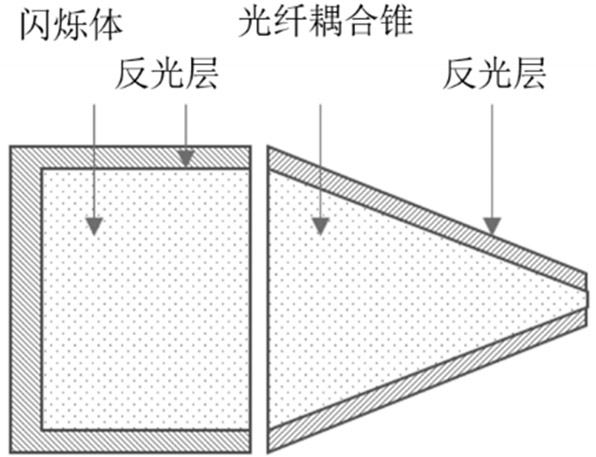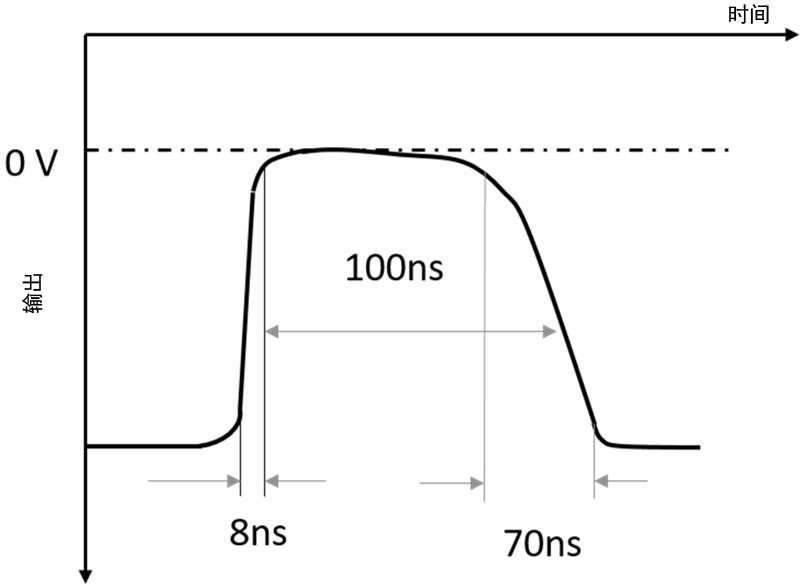High-flux anti-electromagnetic interference proton energy spectrum and intensity detector
An anti-electromagnetic interference, high-throughput technology, applied in the field of radiation detection in physical experiments, can solve problems such as the failure of detector nuclear electronics equipment to work normally, and achieve the goal of overcoming blinding effects, improving anti-interference capabilities, and avoiding blinding effects Effect
- Summary
- Abstract
- Description
- Claims
- Application Information
AI Technical Summary
Problems solved by technology
Method used
Image
Examples
Embodiment Construction
[0030] The anti-electromagnetic interference high-throughput ion detector established by the present invention includes: scintillator, optical fiber coupling cone, scintillation light transmission optical fiber, optical fiber beam splitter, gated photomultiplier tube (gated photomultiplier tube, gPMT), digitizer and data Storage System. The overall structure of the detector is shown in figure 1 .
[0031] The front and sides of the plastic scintillator are wrapped by 20 micron aluminum film, which is used to shield visible light and reflect the fluorescence in the scintillator. See the schematic diagram figure 2 . The high-energy ions penetrate the aluminum film and enter the scintillator, and the energy is deposited in the scintillator, which excites the scintillator to emit fluorescence with a central wavelength of 370 nm. The detector uses EJ-232 plastic scintillator, and the fluorescence generation efficiency is about 8400ph / MeV. Considering that the fluorescence effic...
PUM
 Login to View More
Login to View More Abstract
Description
Claims
Application Information
 Login to View More
Login to View More - R&D
- Intellectual Property
- Life Sciences
- Materials
- Tech Scout
- Unparalleled Data Quality
- Higher Quality Content
- 60% Fewer Hallucinations
Browse by: Latest US Patents, China's latest patents, Technical Efficacy Thesaurus, Application Domain, Technology Topic, Popular Technical Reports.
© 2025 PatSnap. All rights reserved.Legal|Privacy policy|Modern Slavery Act Transparency Statement|Sitemap|About US| Contact US: help@patsnap.com



